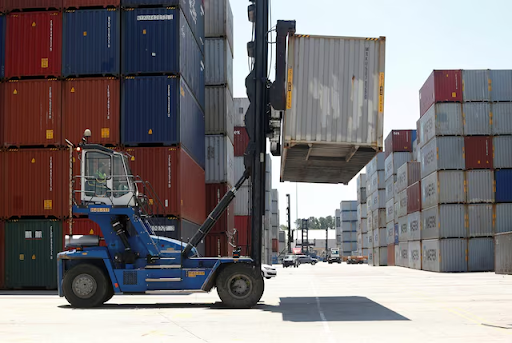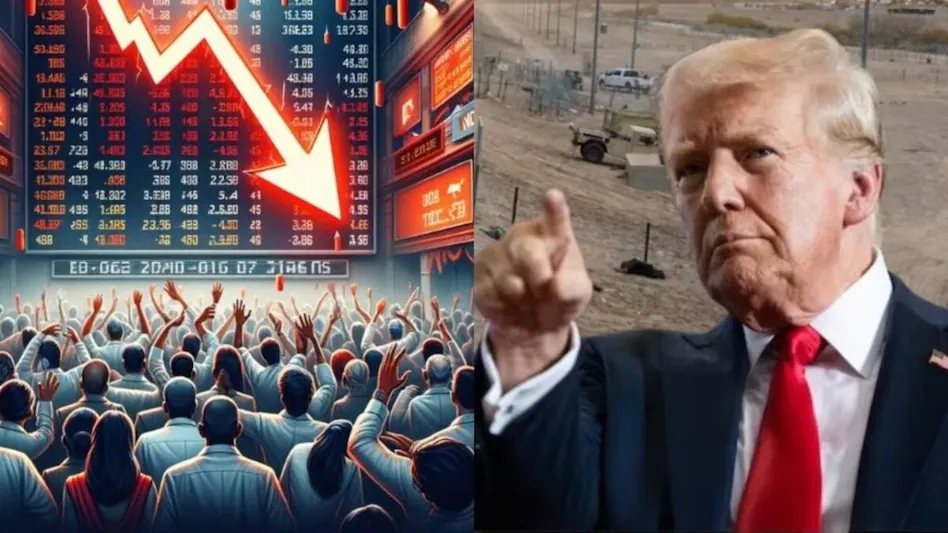
Chinese Lenders and the Challenge of Insufficient Lending | BizBlog News Chinese Lenders Face a Significant Challenge : They Are...
The looming threat of a port strike along the US East Coast, set to hit on Tuesday, is sending shockwaves across industries, trade circles, and communities. With no negotiations planned and tensions high, the potential walkout could have profound effects on the nation’s supply chain and global trade networks. The lack of talks between the International Longshoremen’s Association (ILA) and port operators signals a deadlock, heightening fears of prolonged disruptions.

As Tuesday approaches, businesses and consumers are growing increasingly concerned about the potential impacts of the strike. The East Coast ports, including major hubs like New York/New Jersey, Savannah, and Charleston, are critical arteries for importing goods such as electronics, apparel, and automotive parts. A shutdown of these ports would not only lead to significant delays but could exacerbate ongoing supply chain challenges still lingering from the pandemic.
At the heart of the dispute lies disagreements over wage increases, automation, and safety concerns. The workers, represented by the ILA, argue for fair wages and protections against job losses due to port automation. On the other side, port operators contend that modernization is necessary to maintain competitiveness on a global scale. Without compromise, both sides are digging in, creating an impasse that shows no sign of resolution before the deadline.
The East Coast ports handle billions of dollars worth of goods every day, accounting for a significant portion of the nation’s trade. A strike would have a ripple effect, not only in the US but around the world. Retailers could face product shortages, manufacturers might experience delays in receiving crucial components, and agriculture exports could be stalled, leading to lost revenues for farmers.
Moreover, the strike comes at a particularly critical time. The holiday shopping season is around the corner, and many retailers are already struggling with inventory issues. A prolonged port shutdown could lead to empty shelves, price hikes, and frustrated consumers. The auto industry, which relies on just-in-time deliveries of parts, could see production lines grind to a halt, leading to layoffs and furloughs.
The most alarming aspect of this situation is the lack of communication between the two parties. With no talks scheduled, there seems to be little hope for a last-minute breakthrough. In labor disputes like this, both sides typically continue negotiations until the final hour, but the absence of any planned discussions suggests a deeper rift.
For those familiar with labor negotiations, this signals an entrenched conflict where neither side is willing to budge. The workers demand job security in an industry that is rapidly evolving due to technological advancements. Meanwhile, port operators are under pressure to enhance efficiency and reduce costs. While automation offers a solution, it also threatens the livelihood of many longshoremen, sparking tensions that have been simmering for years.
While the focus is on the East Coast, the effects of a strike will be felt globally. Major trade routes that rely on these ports will experience delays, and goods that were supposed to arrive at specific times will be rerouted or stuck at sea. This could lead to bottlenecks at other ports and choke points in the supply chain.
Manufacturers in Europe, Asia, and Latin America who rely on US imports of raw materials and parts may have to adjust their production schedules. Global trade, already strained by shipping backlogs and rising costs, could face another crisis if the East Coast ports go offline. Economists are predicting that this disruption could lead to higher inflation rates, as scarcity drives up prices for both businesses and consumers.
Given the lack of scheduled talks, the chances of avoiding a strike appear slim. Unless both sides return to the negotiating table quickly, it seems inevitable that workers will walk off the job on Tuesday. However, labor disputes often have a way of forcing compromises at the last minute, particularly when the economic stakes are high.
Political pressure could also play a role. The Biden administration, already facing scrutiny over economic issues, may step in to mediate between the two sides. Federal intervention in port strikes is not unprecedented, but it is often a last resort, as the government typically prefers to let labor and management resolve their differences independently.
While much of the discussion has focused on economic impacts, it’s important to remember that behind every strike are real people and families. Longshoremen work in physically demanding conditions, often under harsh weather, to ensure that goods flow smoothly in and out of the country’s ports. Their work is vital to the economy, yet they fear that automation will gradually render their jobs obsolete.
The communities surrounding the ports could also face significant challenges. A prolonged strike means that workers will be without pay, which could lead to financial strain for families. Local businesses that depend on port traffic, from logistics companies to nearby restaurants, would also suffer as the flow of goods comes to a halt.
As the Tuesday deadline looms, it’s difficult to predict how this standoff will end. A compromise could be reached, as has happened in previous labor disputes, but the absence of talks is not a promising sign. Both sides have valid points – the workers want job security and fair wages, while the port operators need to modernize to compete in the global market.
In the end, the solution will likely require a balance between preserving jobs and embracing new technologies. Perhaps investments in worker retraining programs or phased automation could offer a way forward. Whatever the resolution, it’s clear that the consequences of inaction could be severe, both for the US economy and the global supply chain.

Chinese Lenders and the Challenge of Insufficient Lending | BizBlog News Chinese Lenders Face a Significant Challenge : They Are...

Nvidia Sees Surge in Retail Investor Interest | AI Powerhouse | Bizblog News Nvidia Experiences a ‘Remarkable’ Surge in Retail...

White Gold: Key to South America Trade Agreement | BizBlog News White Gold: The Cornerstone of Europe’s Trade Agreement with...

Introduction The global financial markets are facing renewed volatility as the Trump administration announced broader-than-expected reciprocal tariffs. This latest move...

Introduction As the world braces for a new wave of tariffs imposed by former U.S. President Donald Trump, global markets...

Market Overview The Indian equity markets faced a turbulent start in Tuesday’s trade, with both the Nifty 50 and Sensex...